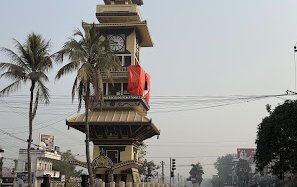The World Humanitarian Summit held in Istanbul, Turkey on 23 and 24 May 2016 saw 9,000 delegates from governments, United Nations agencies and civil society coming together to seek ways to reverse the trend of ever-increasing humanitarian needs and to make the international aid system more efficient and effective. The Summit was held in the pre-text of deepening humanitarian crisis, both natural and human-based.
The summit marked the beginning of a new relationship between the humanitarian and development communities, with widespread agreement of the need to work together better. The UN report One Humanity: Shared Responsibility notes that a shift from perpetual crisis management towards effectively managing prevention and early action is urgently needed, and INGOs agree that greater collaboration between humanitarian and development NGOs, is crucial in preventing disasters. The big UN agencies all signed on to a new “Commitment to Action” on collaborating in a “New Way of Working” together towards collective outcomes consistent with the Sustainable Development Goals over multi-year timeframes. And yet the Summit could not materialize what exactly that convergence means and how do we go about it.
Bridging the humanitarian-development divide is debated. Rethinking the divide between the two agendas, there has been from the beginning the divide, both emerging at different times and evolving at separate speeds as discussed in a recent edition of the guardian. Michael Barnett, author of Empire of Humanity, A History of Humanitarianism maintains that humanitarian aid whose modern roots can be traced back to the 19th century was born largely out of emergency situations. While the development world was born out of colonialism, beginning pre-World War II, and transformed into modern development assistance after the War. These two have different cultures and philosophical perspectives.
The humanitarian-development divide seems irrelevant in fragile states where people face a combination of poverty, inequality and threats from disasters. The Millennium Development Goals (MDGs) missed the opportunity of bridging the humanitarian and development agendas.
Humanitarian and development agendas are technically different, short-term and long-term, but the common focus is human in terms of human well-being and the alleviation of human suffering. With the adoption of the Sustainable Development Goals (SDGs), there is an opportunity to bring these two agendas in close proximity.
There is a concept of LRRD (Linking Relief, Rehabilitation and Development) originated in the 1980s. The basic idea of LRRD is to link short-term relief measures with longer- term development programs in order to create synergies and provide a more sustainable response to crisis situations.
LRRD safeguards that humanitarian programming does not undermine development work and that development programming is building on humanitarian knowledge and standards. LRRD can address poverty that disasters can generate or intensify, as well as it can reduce disaster risks and improve preparedness that poverty and vulnerability can generate or intensify.
Initially, LRRD was conceived as a linear continuum sequence: relief, followed by rehabilitation, followed by development co-operation. However, experience from the 1990s demonstrated that treating relief, rehabilitation and development as separate processes failed to respond to the complexity of a number of crisis situations. As a result, a contiguum approach has been favored for simultaneous and complementary use of different aid instruments.
In the context of SDGs and the ongoing earthquake response in Nepal, we have a perfect opportunity to bridge the humanitarian and development divide through LRRD. It requires discussion, internalization and coordination at all levels of governance among all the State and Non-State actors.
Dr. Prabin Manandhar is an expert of international development. Currently, he is working as Country Director of The Lutheran World Federation. He is also a visiting faculty at the Kathmandu University. He can be reached atprabin.manandhar11@gmail.com
- Reclaiming Nepal’s Budget From Hidden Hands
- Jun 07, 2025
- Redefining Regional Cooperation: How SAARC can evolve like ASEAN
- May 11, 2025
- From Nepal to Myanmar: Navigating Earthquake Response Lessons
- Apr 13, 2025
- World Humanitarian Day 2024: Committing to Peace and Accountability
- Aug 19, 2024
- Nepal Investment Summit: Unlocking Economic Potentials For Growth And Development
- Apr 28, 2024
















